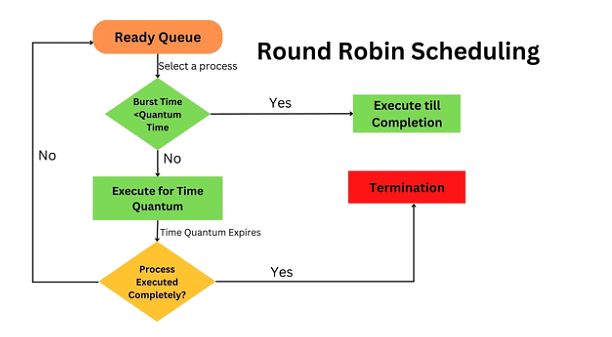Program to calculate Round Trip Time | Computer Networks - Computer Science Engineering (CSE) PDF Download
| Table of contents |

|
| Round Trip Time (RTT) |

|
| Factors Affecting RTT |

|
| Practical Example |

|
| Python program to calculate RTT |

|
Round Trip Time (RTT)
Round Trip Time (RTT) is the total duration from when a signal is sent to when its acknowledgment is received back. This includes the time it takes for the signal to travel to its destination and for the acknowledgment to return.

Factors Affecting RTT
- Internet Speed: This refers to how fast your internet connection can send and receive data. Faster connections generally result in lower RTT.
- Transmission Medium: Different types of connections (like fiber optic cables or wireless signals) affect how quickly signals can travel, influencing RTT.
- Distance: The physical distance between the sending and receiving points affects RTT. Longer distances mean longer travel times for signals.
- Number of Nodes: Signals may pass through several devices (routers, switches) between sender and receiver. More nodes mean longer RTT due to additional processing and transmission delays at each node.
- Local Network Traffic: If many devices on your local network are active, it can slow down signal transmission, increasing RTT.
- Server Load: The workload on the server receiving your signal affects how quickly it can process and respond, impacting RTT.
- Device Performance: The speed and efficiency of each device (like routers or servers) along the signal path influence how quickly signals are processed and forwarded.
- Interference: Any disruptions or noise in the signal path can cause delays or errors, affecting RTT.
Practical Example
When you ping a website's IP address, you're testing the RTT. If the website is far away, your internet is slow, or there's heavy traffic, the RTT will be longer. A low RTT indicates a quick response, while a high RTT suggests delays in data transmission.
Understanding these factors helps in troubleshooting network issues and optimizing internet performance for better communication and data transfer speeds.
Python program to calculate RTT
# Python program to calculate RTT
import time
import requests
# Function to calculate the RTT
def RTT(url):
# Time when the signal is sent
t1 = time.time()
# Sending GET request to the URL
r = requests.get(url)
# Time when acknowledgement of signal is received
t2 = time.time()
# Total time taken (RTT calculation)
tim = t2 - t1
print("Round-Trip Time (RTT) in seconds: {:.4f}".format(tim))
# Driver program
# URL address to measure RTT
url = "http://www.google.com"
RTT(url)
Output
When you run the program with url = "http://www.google.com", it will send a GET request to Google's homepage, measure the time it takes for the request and response, and then print the RTT in seconds.
Note: Ensure you have the requests library installed (pip install requests) before running this program, as it is used for making HTTP requests in Python.
This program effectively demonstrates how to measure and print the Round-Trip Time (RTT) for a web request using Python and the requests library.
|
21 videos|113 docs|66 tests
|
FAQs on Program to calculate Round Trip Time - Computer Networks - Computer Science Engineering (CSE)
| 1. What is Round Trip Time (RTT)? |  |
| 2. How is Round Trip Time (RTT) calculated? |  |
| 3. Why is Round Trip Time (RTT) important in networking? |  |
| 4. How can Round Trip Time (RTT) be optimized in a network? |  |
| 5. What are some common factors that can affect Round Trip Time (RTT)? |  |

|
Explore Courses for Computer Science Engineering (CSE) exam
|

|

















